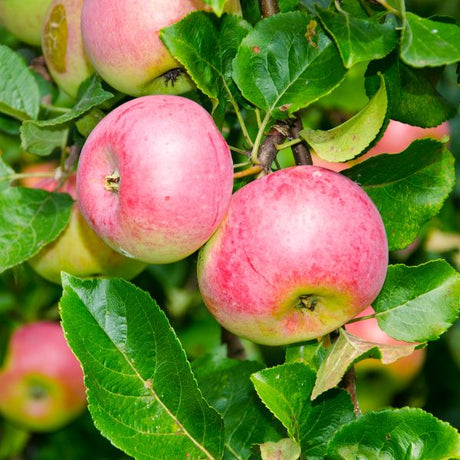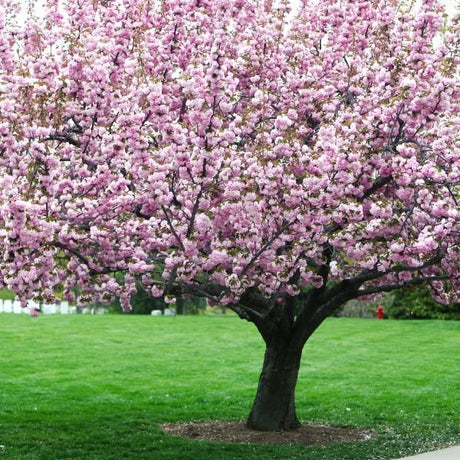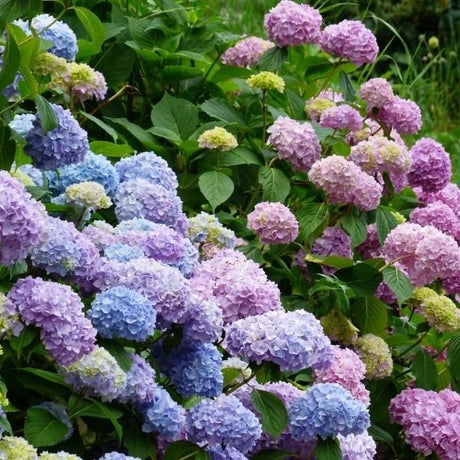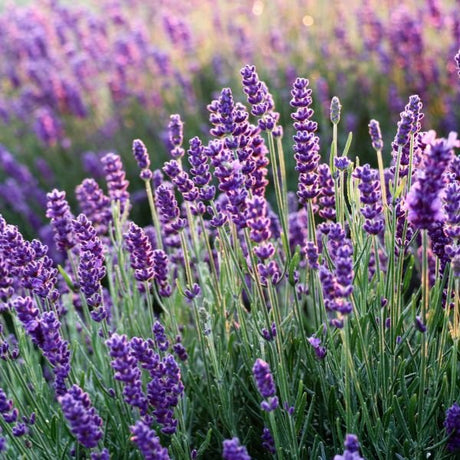Prairie Seed Mix
- Stay Protected with Plant Sentry ™
Prairie Seed Mix - 4 Oz Pack is backordered and will ship as soon as it is back in stock.
Plant Sentry™
Plant Sentry™
Plant Sentry is designed to protect both consumers and the nursery trade from invasive plant pests and diseases. Sites that display the Plant Sentry protection badge are protected from consumers buying and nurseries shipping material carrying invasive pests and diseases.
This proprietary eCommerce software prevents the shipment of a restricted plant to each state. The Plant Sentry system includes a shipment certification program. The Plant Sentry Compliance Officer works closely with NatureHills.com and each nursery or fulfillment center to ensure only compliant plants are sold to customers.
Click Here to learn more

Delivery and Shipping
Delivery and Shipping
Shipping
To obtain a more accurate shipment time-frame, simply enter your zip code in the “Find Your Growing Zone” box to the right. Our plants are grown all over the country and lead time on items may be different because of this. Once your order is placed, you will also receive the specific shipment time-frame information as part of your order confirmation. Once an item ships, you will receive shipment notification and tracking numbers, so you can follow along while your plant travels to your doorstep. We use FedEx, UPS, or USPS at our discretion.
Due to winter weather we have put a hold on shipping to the areas shown below in grey. You can still order now and we will ship the plant to you during an appropriate time for your zone.
Standard Shipping Rates
At Nature Hills we handle, package and ship the products you order with the utmost care to ensure healthy delivery. Shipping and handling charges are calculated based on the tables below. Please note that some items include an additional handling surcharge, these will be noted on the item's product page.
| From | To | S&H |
|---|---|---|
| $0 | $19.99 | $24.99 |
| $20 | $49.99 | $29.99 |
| $50 | $69.99 | $34.99 |
| $70 | $99.99 | $39.99 |
| $100 | $129.99 | $44.99 |
| $130 | $149.99 | $48.99 |
| $150 | $150+ | Approx 28% |
Click here to see our full rates
Buying Options for Plants
Nature Hills sells a large variety of plants with several options available. Plants are offered in both potted containers and as dormant bare root without soil. Here is a helpful resource to understand your options as you create a beautiful landscape with help from Nature Hills.
Ever wonder what a larger plant will mean for your landscape? Container Sizes are really all about the age of the plant!
Seasonally, Nature Hills offers hand selected, high quality bare root trees, shrubs and perennials. Bare root plants are sold by height from the top of the root system to the top of the plant. Plants may be taller than the height minimums.
- Popular sizes of select trees are 1 foot, 2 feet, 3 feet, etc.
- Popular sizes of select bare root plants is 1 foot, 18 inches, etc.
Nature Hills Container Size by Volume
Keep in mind, specific varieties and different growing conditions can affect the rate at which plants grow. Variations in size may occur.
| Young Plants to 18 Months | ||
|---|---|---|
| Size | Volume | |
| 2"x2"x3" | Ranges from | .18 to .21 dry quarts / .198 to .23 dry liters in volume |
| 4.5" Container | Equal to | .65 dry quart / .72 dry liter in volume |
| Sprinter Pot | Equal to | .63 dry quart / .69 dry liter in volume |
| 4" Container | Ranges from | .31 to .87 / .35 to .96 dry liter in volume |
| 6" Container | Equal to | 1.4 dry quarts / 1.59 dry liters in volume |
| 1 Quart | Equal to | 1 dry quart / 1.1 dry liter in volume |
| 5.5" Container | Equal to | 1.89 of a dry quart / 2.08 dry liters in volume |
| 4"x4"x5" | Ranges from | .8 to 1.1 dry quarts / .88 to 1.2 dry liters in volume |
| 4"x4"x6" | Ranges from | 1.0 to 1.3 dry quarts / 1.1 to 1.41 dry liters in volume |
| 4"x4"x9" | Ranges from | 1.1 to 2.1 dry quarts / 1.2 to 2.3 dry liters in volume |
| 4"x4"x10" | Ranges from | 1.7 to 2.3 dry quart / 1.87 to 2.53 dry liters in volume |
| Plants 18 Months - 2.5 Years Old | ||
|---|---|---|
| Size | Volume | |
| 2 Quart | Equal to | 2 dry quarts / 2.2 dry liters in volume |
| #1 Container | Ranges from | 2.26 to 3.73 dry quarts / 2.49 to 4.11 dry liters in volume |
| 5"x5"x12" | Equal to | 3.5 to 4.3 dry quarts / 3.85 to 4.74 dry liters in volume |
| Plants 2 - 4 Years Old | ||
|---|---|---|
| Size | Volume | |
| #2 Container | Ranges from | 1.19 to 1.76 dry gallons / 5.24 to 7.75 dry liters in volume |
| #3 Container | Ranges from | 2.32 to 2.76 dry gallons / 10.22 to 12.16 dry liters in volume |
| Plants 3 - 5 Years Old | ||
|---|---|---|
| Size | Volume | |
| #5 Container | Ranges from | 2.92 to 4.62 dry gallons / 12.86 to 20.35 dry liters in volume |
| #6 Container | Ranges from | 5.25 to 6.01 dry gallons / 23.12 to 26.42 dry liters in volume |
| #7 Container | Ranges from | 5.98 to 6.08 dry gallons / 26.34 to 26.78 dry liters in volume |
Plant Highlights
Prairie Seed Mix highlights at a glance!
Plant Highlights
Plant Highlights
-
Brand
-
Botanical Name
-
Growing Zones
-
Mature Spread
-
Sun ExposureFull Sun
-
Moisture
-
Soil
-
Growth RateMedium
-
Flower Color
-
Pollinator Friendly
-
Pruning Time
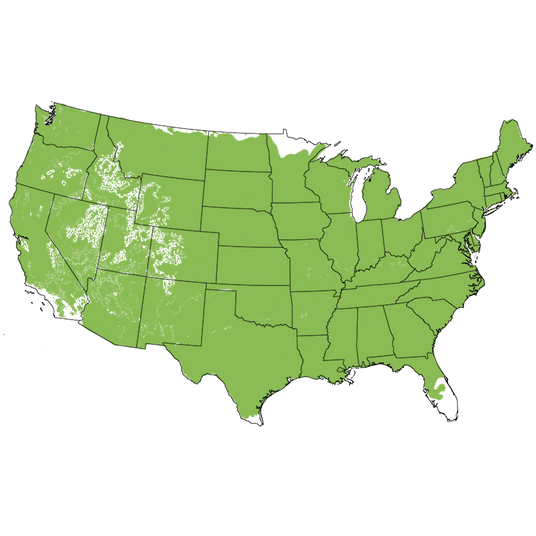
Growing Zones 4 - 9
Choosing native wildflowers that are as hardy and pretty in the sun garden is easy! Pick up the Prairie Seed Mix for yourself, and enjoy a fantastic mixture of 16 native prairie plants that Pollinators and songbirds adore! Hardy in the heat and cold of USDA planting zones 3 to 9, this deep-rooted and adaptable variety of seeds will fill your landscape with color from spring until fall!
Everyone now realizes just how important it is to remove turf areas or open spaces to include these vital plants to attract wildlife, birds, and beneficial pollinators to your yard. These native plants have evolved to adapt throughout a significant portion of the US, growing freely in ditches, abandoned farmyards, out-of-the-way areas, and prairies in the sun!
These seed mixes work well together and perform well to create their own small plant community! They look beautiful and offer flowering throughout the different times to best attract beneficial insects and birds and be host plants to your yard all growing season long!
This Native Seed Mixture Includes:
- American Germander (Teucrium canadense) Fragrant scalloped leaves and pretty purple/violet blooms on 1.5 - 3 foot tall stems. Each floret has a prominent lower petal that makes each bloom look like ladies dancing in long purple dresses! This perennial wildflower blooms from June through September.
- Black-Eyed Susan (Rudbeckia hirta) is a hardy perennial that reseeds as well, spreading the joy even more or feeding songbirds. These 2-4 foot tall plant has showy brilliant yellow blooms with a dark brown, fuzzy, raised center. The daisy-like 3-inch flowers may be single or double. An excellent prairie plant that is also a great cut flower! Blooms summer to fall.
- Common Milkweed (Asclepias syriaca) are Monarch butterfly host plants and pollinator-rich perennials. Growing 2-3 feet tall, the wildly fragrant pinkish-mauve flowers bloom from June through August. These reseed easily and spread by big, ornamental seedpods.
- Fourpoint Evening Primrose (Oenothera rhombipetala) Fringy pale yellow flowering spikes with ruffled florets, growing 1-3 feet tall. An annual or biennial that freely reseeds and spreads through the garden. The flower spikes bloom from the bottom up for a long flowering display lasting July through September.
- Heal All aka: Selfheal (Prunella vulgaris) are herbal, low-growing perennials that grow 1-3 feet tall. The blue to purple and sometimes white flower spikes appear in the late spring into fall sporadically.
- Plains Bee Balm (Monarda pectinate) is a quirky perennial that can grow 18-24 inches tall, sometimes reaching up to 3 feet in some areas. The whimsical and fragrant crowns can be pale pink or lavender and bloom from May to August. The aromatic foliage and Hummingbird-friendly blooms will always bring a smile to your face.
- Porcupine Grass (Miscanthus sinensis 'Strictus') is a unique striped fountain of Perennial grass that can grow up to 6 feet. Late summer seed heads will develop and provide cover for wildlife. The green upright foliage has a unique stripe intermittently along each blade.
- Prairie Ragwort (Packera plattensis) are biennial and annual plants that reseed each year. Growing 18 - 24 inches tall, filling out with yellow daisy-like flowers that last from May through July.
- Purple Poppy Mallow (Callirhoe involucrata) are showy perennials that usually grow less than a foot tall but may spread up to 3 feet wide groundcover. Loves full sun, the magenta single flowers appear May through June.
- Scaly Blazingstar (Liatris squarrosa), also known as Gayfeather, are reddish-purple wands that grow with a variable 2-4 feet in height. Very drought tolerant and loving drier soils once established, blooming from August to October!
- Showy Partridge Pea (Chamaecrista fasciculata) are annuals that reseed each year, featuring a variable height of 1-3 feet tall. The yellow flowers are borne in the leaf axils along the stems, flowering June through September. Great legume-family plants that naturalize well and add nitrogen to the soil.
- Showy Goldenrod (Solidago speciosa) are showy late blooming perennials, typically 2-3 feet tall when in bloom, but can be taller in areas where they are happy. Yellow flowers are borne in airy terminal clusters that arrive from July through September.
- Sideoats Grama (Bouteloua curtipendula) are perennial ornamental native grasses that have a curious way they hold their seeds along one side of their stem. Purplish seed heads appear in July and remain showy into fall. The lower growing clumps add a pretty touch to the sun garden. Cut to ground each late winter or early spring.
- Western Wallflower (Erysimum asperum) is a Mustard-family plant that can be a biennial or perennial growing around 1.5 feet tall. These feature yellow flower clusters on terminal clusters throughout the mid to late spring. Re-seeds freely for continued crops from mature flowers.
- Willow-Leaved Sunflower (Helianthus salicifolius) is a perennial that can get up to 8-10 feet tall in excellent conditions. Easily divided every few years, the yellow daisy-like flowers appear on branched panicles and bloom between September to October.
- Yarrow (Achillea millefolium) are excellent perennials, typically growing 2-3 feet tall. The flat-topped white flower clusters feed pollinators from June through September. You'll love the ferny aromatic grayish soft foliage.
There are also rice hulls included to help with the aid in seed distribution when sowing.
Planting and Application:
There is always something blooming with these Native Seed mixtures! They can be scattered in a prepared or existing sunny bed or border. Hardy throughout much of the US, and handling Xeric and low-moisture locations. If you are recreating a patch of prairie, or creating a buffer zone for bees and butterflies to frolic!
These plants not only handle sun, heat, and cold, but also are wonderful low-moisture need plants once established and are fire-wise landscaping plants that survive occasional drought! Plus you'll enjoy gorgeous native wildflower bouquets all spring and summer!
Scatter these seeds among your existing mixed Perennial and Cottage borders, and Pollinator installations in the sun. These tough natives are must-haves for the Rock garden, and that patch of wilderness along the back strip of your property where you don't want to mow. You will create an important buffer strip of deep-rooted plants with long-term savings on water, and maintenance when compared to turfgrass.
Fill your side yard with pretty blooms or reclaim some of your front landscaping from the water-hungry grass to create a safe space for beneficial insects and pollinators. Simply mow a strip down the middle for a meadow feel, and place a hammock and a shade tree at the end to relax and listen to the pollinators hum!
- Mix of 16 Native Prairie Plants
- Spring, Summer & Fall Blooming Varieties
- Vital Pollen & Nectar Resources For Pollinators
- Easy to Grow Annual, Biennial & Perennial Mix
- Self Seeds or Spreads Each Year
- Meadows, Pollinator Gardens, New & Existing Garden Beds & Borders in the Sun
#ProPlantTips for Care:
These wildflowers grow best in full sun in cooler climates and can handle some partial shade in the afternoons of warmer growing zones. Prepare the site with some compost and break up any soil that is hardpan or compacted. Soak the site well to have the soil primed and not just wet the surface. Scatter the seeds and use a garden rake to lightly work those seeds just under the soil surface.
Then just as if you had planted grass seed, a light sprinkling of some straw will help the surface of the soil from drying out. Using a misting nozzle on your hose, gently wet the surface of the soil immediately after planting. You may need to moisten the surface once or twice a day at the start if it is sunny and windy where you planted. Maintain even moisture without overwetting the area without allowing the soil to dry out on top. Depending upon the time of year, and the temperature, you should see germination beginning soon after planting.
If you see weeds that have germinated you may need to pluck them out or use a herbicide to spot-treat the perennial weeds.
You can cover your seedlings with shade cloth to protect them from intense sun for a short time until they acclimate, or other row covers in the event of heavy driving rains. Once larger, scatter finely shredded compost over the site to act as mulch without smothering them. If you are not home to moisten the top of the planted area during the day, you may consider using a row cover, cheesecloth, or other light covering over the area to keep it moist for the first few weeks.
You may need to thin or transplant your seedlings if they are growing too closely together. Prune down or mow larger plantings in the spring and leave the trimmings in place along with their seeds that will germinate and further spread the joy! For smaller patches, you can deadhead your plants to encourage new blooms, but leave the last flowers to develop seeds to collect for later or leave them to self-sow on their own. Birds also appreciate these seeds for late-season food sources!
Once established, these planted areas will need little care, and little additional watering or fertilizers or chemicals.
- Full Sun & Partial Shade
- Well-Drained Locations
- Regular Moisture At First - Low Moisture Once Established
- Deadhead Late Fall or Prune Early Spring
- Collect Seeds to Re-Seed & Expand Your Garden
Spread some joy with the rugged wildflower beauty of the Native Seed Mix! Available now at Nature Hills Nursery! Feel good knowing you are supporting your local ecosystem with plants that know how to grow in your area, feed pollinators, and enhance the world around you!






